
If your thinking "What's this? Who the hell is Jimmy Röstlund?" then you obviously haven't read part 1, and you should check it here. Otherwise, please read on... ------------------------------------------------------------------------------------------------------
I had seen a few pics of the hub in mags and what-not and it looked pretty slick, but I was in a bike shop one day, just having a look around, and the guy behind the counter said “check this thing out” and started taking apart your hub. The tolerances between the cones, bearings, shell was all so precise it was like it was part of some kind of high tech machine part – maybe like a piece of a helicopter or something. And it turns out that you used to work as a “helicopter component technician” (not as rad as it sounds apparently) amongst loads of other stuff. Do you think that kind of work has had an influence on your design work, or the kind of stuff you want to design? Outside of bmx what other stuff influences you design work?I've never really tried to pinpoint where my "design style" comes from. I've just always had this tendency to like things that are no-frills, straight forward and functional and of course - well made. I've always been rather meticulous about that I do and I want everything to be as close to perfect as possible and to meet my high standards. I can't stand doing shit half-assed. There has been times when some parts or prototypes have not met my expectations and when that happens it really brings me down, but at the same time that pushes me to step it up and make sure it works out better next time. Unfortunately I'm not always the person in control.
As for influences... I don't really feel influenced by anything in particular, right now I can't think of any real influences at all. I often see stuff that sparks ideas, even if the thing I see is something completely different from the idea it sparked. Not a perfect example of that statement is the original idea for the front hub that I got when I saw the Brunn straight pull hub, which looks and works rather different from what I ended up with.
 Talking about the tolerances in the hub. You got the initial production run machined in Sweden, but now that they’re being made by Simple, I’m assuming they’re done in Taiwan. Were there any issues with getting the same level of control over production once it was moved halfway across the world? What’s the set-up like over there?
Talking about the tolerances in the hub. You got the initial production run machined in Sweden, but now that they’re being made by Simple, I’m assuming they’re done in Taiwan. Were there any issues with getting the same level of control over production once it was moved halfway across the world? What’s the set-up like over there?With the hubs that were made in Sweden I actually got to assemble every single one myself, so if any of the tolerances were out I would notice it right away. Since I also drilled and countersunk every single spoke hole on the entire batch by hand, which meant that I physically held every hub shell in my hands and could identify flaws that way. It’s obviously not going to be like that when you step it up and take your business to Taiwan. So yeah... there have been some issues. Mainly in the first batch where the tube spacer preventing bearing bind was slightly too long and caused a wobble in some hubs. I was so frustrated about that whole deal and it almost made me want to give up.
The communication with the factories is definitely the biggest issue that I’ve noticed. You really have to deal with a good agent that can translate and communicate the specifics of what is asked of them. Sometimes this does not work exactly as it should and there have been a few occasions where samples are made from the wrong set of drawings for example. Or the time when we wanted a prototype frame with no brake lugs and the dudes in the factory just assumed they were missing from the drawing and welded them on there anyway.
I’ve still not been over there, so I have no first hand experience of what the set-up is like. I’ve seen photos and I’m sure a few people would be surprised at the fact that it’s not this super high tech place with a spotless machine shop floor. From what I've seen it's more like an Asian food market style setup, but somehow they manage their stuff quite well.
Some of the most respected BMX brands still have their manufacturing done in the US while some of the most innovative have it all done in Asia. What do you make of the whole USA v.s Taiwan thing?I honestly think that as long as you source a good vendor and agent, then the manufacturing quality is on par with US made products most of the time. Sometimes it can probably even be better because they do have excellent techniques and capabilities over there. But the prestige of having a “Made in USA” stamp on a product will probably never wear off. Although the price/quality ratio won’t compare to Taiwan made products.
Alright, multiple choice: There’s a couple of hubs from Éclat and KHE, that came out a bit after the Eject hub. Was that: a) Something you were involved in b) Something elseb) Something else. The official statement from both KHE and Éclat is that prototyping was under way in parallel to my hub being released by Simple and that the design similarities are a coincidence.
 Shit's getting flangeless round here...Did you patent the design and did you approach any other companies with it? And is that the way you want to keep working. Designing stuff on your own and then licensing the designs out to other brands? What would be your ideal work / life set up?
Shit's getting flangeless round here...Did you patent the design and did you approach any other companies with it? And is that the way you want to keep working. Designing stuff on your own and then licensing the designs out to other brands? What would be your ideal work / life set up?I never did any patenting. Looked into it a little bit but soon realized that it was going to take too much time and effort for something that might not be fruitful in the end. It's been pointed out by many people on BMX forums and whatnot that the “flangeless” design has been around for a long time. It’s been seen on wheelchairs and road bikes before, although that was something I was not aware of at the time when I started working on the design. That means the flangelessness would not have been a patentable aspect. Neither would any of the other features on their own, since none of it was new technology. But the concept of the hub with a replaceable guard might have been.
(edit: I challenge anyone to use the word flangelessness in a conversation that is not about the Eject hub)The "licensing" thing with Simple only just came about since I was helping out with their other drawings and designs anyway. Then I had the hub thing on my own, but it just made sense to team up and get it all made at the same place. Helped me out a lot for sure, since all the production and distribution channels were already in place.
I'm not the kind of person that will be happy just working in an office environment or just work in a manufacturing environment. I want the best of both worlds. I love working with my hands and actually make stuff myself, but I also love the office part of it as well, coming up with the designs, graphics and so on. For a long time I've been dreaming about having my own prototype / small run machine shop. That way I could earn my living making prototypes and small production runs of stuff (not necessarily for just BMX companies). All the while having the chance to make my own parts and whatnot. But I don't know how a business setup like that would work in real life.
Just about every new part that comes out has it’s fair share of loud online critics. Like there is some kind of in-built progress-phobia in people. Maybe it’s just a bit of healthy caution – I don’t know. But especially if something has a low weight, or a low top tube, then people really get stuck in to it. Good design generally is supposed to make life easier, but a lot of people don’t want the design of a frame or part to make a trick easier. What do you think about that? Is that something that a part design should take into account?I think that the parts you put on your bike should serve one purpose: To enable you to ride the way you want. If the way you ride, or want to ride, requires you to have a top tube that touches your bottom bracket, then that's just fine by me. Personally I don't really agree with the look of the extremely low top tubes and I have a hard time seeing why it would make tricks easier, so you probably won't see me design or be overly eager to draw a frame like that. But to each their own.
In my personal opinion a part should not restrict your riding, only enhance it, so designing a part that's only good for certain tricks doesn't make much sense to me. The big bar trend has gone a bit too far, which I would assume most riders agree with. I can see why the bigger bars came in the first place - it makes sense to have a comfortable placing of your hands, right around the width of your shoulders, and to not be extremely hunched over. For a time there they were just too narrow and low! But when they become so wide that even the bigger guys have a problem reaching the grips, then something's not completely right. Same deal as usual with the riders pushing a trend too far.
As a reality check, just compare it with doing push-ups... if your hands are placed too far apart or too close it makes it harder and it restricts movement. With the hands just a little wider than your shoulders that's when you have the most freedom of movement and strength. Common sense to me. But then again.. there are many young little kids out there that can hardly reach their grips who shred way better than me, so who am I to talk? Imagine what they could do with a bar their size though...
In your opinion, is there something that BMX design needs more of?As for good design many bases are covered I'd say, but I still think there is still plenty of room for improvement. I just like to see when companies really take the specifics of how we ride and how our bikes and parts are put through stress and incorporate that in their design/engineering. A BMX is not like any other bike, what works for a mountain bike for example, might not work so good for a BMX. At least not without some adaptation.
Something that you think it could do with less of?What we don't need more of is the philosophy that just cutting another hole somewhere constitutes "new innovative design". I'm not pointing fingers here, there are plenty of companies guilty of that. In my opinion there's more to it than just removing material "in places where it is not needed". I also don't think we need plastic in more parts of the bike.
 Simple's V1 System stem - the CAD model then the finished product. Not often you see holes being removed from a product during it's developmentOther than Simple are there other BMX companies, or brands outside of BMX, who’s design and / or outlook you appreciate?
Simple's V1 System stem - the CAD model then the finished product. Not often you see holes being removed from a product during it's developmentOther than Simple are there other BMX companies, or brands outside of BMX, who’s design and / or outlook you appreciate?Within BMX there are a few companies that you really have to look up to. I can't get away without mentioning Odyssey, they have had their fair share of freaky products in the past, but they've really been on the forefront of materials and design development in the past few years. That along with their excellent idea of quality and standing behind their product. That's just something you have to respect.
I also admire Fly Bikes for trying different things and thinking outside of the box. They have had some products that didn't work out, but all in all they've pushed BMX in a better direction. In general, I like the smaller companies that do things their own way, putting their heart and soul into it and not just trying to play on the latest trend. Tree Bike Co. is cool as well and we should all be eternally grateful to Standard Bykes and S&M for pushing frame design in the right way back in the day.
Outside of BMX I think it's not a big surprise that I like Apple Computers and most of things they do, the quality and their well thought out design in both hardware and software, I just can't help being impressed.
Where do you want to take Eject in the future? Are you keen to keep collaborating with companies like Simple or would you one day like to make it a stand-alone parts company? Any plans to branch out and design stuff outside of bmx?For the future my only plan is to keep doing what I do and hopefully make it grow. Taking it in the direction of a stand-alone parts company is definitely somewhere I'd like to see it go later on and hope I will be able to take it there. It's not going to happen overnight, that's for sure. Right now I do all of this outside of my normal full-time job and it takes up a lot of my spare time and takes time away from the people around me.
 CAD of the Tempered Bikes stem that Jimmy helped out with. Check their site and some pics of it here
CAD of the Tempered Bikes stem that Jimmy helped out with. Check their site and some pics of it hereI do quite enjoy working with different companies as I have done now the past year where I've been able to offer my help to a couple of Australian bike companies, namely the not-so-unknown Tempered Bikes and a small company from Cairns named Nightfall Bike Co. I've helped these guys out with the CAD stuff making some drawings and 3D models, not so much with the actual design work - I've just interpreted some napkin drawings basically.
I can't imagine my passion moving too far away from BMX, but if the opportunity arises I'd be happy to do design or drafting / 3D modelling for other types of products and businesses as well. I don't see the reason for limiting myself to just one thing.
 Ahhh... and you were wondering if there would ever be a cassette version the Eject hub. Time will tellShout outs? Final words of wisdom?
Ahhh... and you were wondering if there would ever be a cassette version the Eject hub. Time will tellShout outs? Final words of wisdom?Big thanks go out to my good old friends in Sweden for helping me out when I first started Eject. If it wasn't for them I would not have been able to afford making the initial prototypes (it was really tight with the money back then). I miss you guys, come over here and visit me, the flight is not that bad!
I also have to thank the guys who bought the hubs from the first, Swedish made, batch and who spread the word and gave me input about them. Greatly appreciated! Then of course I have to say thanks to Niels and Simple Bikes for the opportunity to be part of the company and getting my work out there, it's been a great ride so far and I hope it'll go on for a long time.
Moving overseas has been largely a great experience for me and I'm very happy to have made so many friends here in Melbourne. Many of whom are extremely dedicated to the well being of the BMX scene and are passionate about their endeavours and doing great things within the industry. Cooper, Flagz & Jay, who were instant friends to me from he start. All of the Focalpoint crew and also the other locals who have all really made me feel right at home here - it means a lot. Cheers guys!
And of course thanks to you Jeff for thinking of doing this interview.
The End-------------------------------------------------------------------------------------------------------
Question: When a bike company owner has a kid, what does his design guy get him for a present
Answer: This...

Niels at Simple had a baby recently and Jimmy has used CAD trickery to create a virtual present. Of course you'll notice that the new generation don't run seats... and I think I recognize that hub.
Congrats Niels!


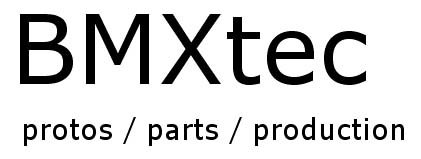











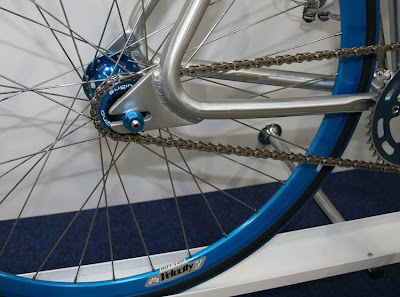

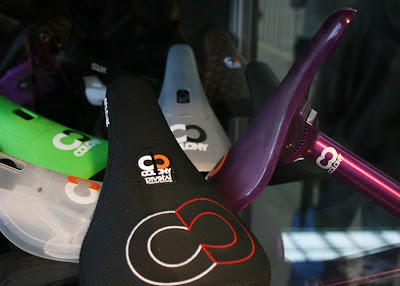
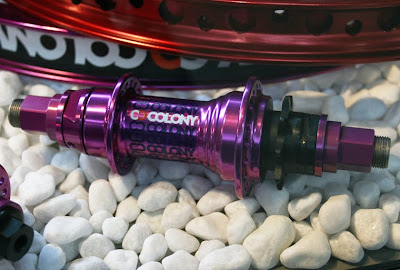

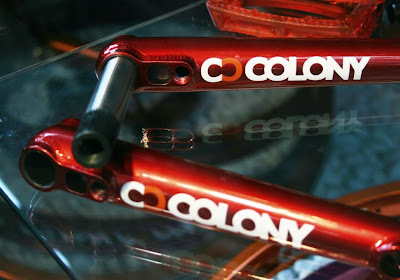





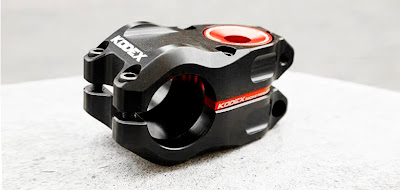



















 Total Blog Directory
Retail Displays
Total Blog Directory
Retail Displays